The 4 Most Effective 2-Fly Setups For Nymphs That Guides Use
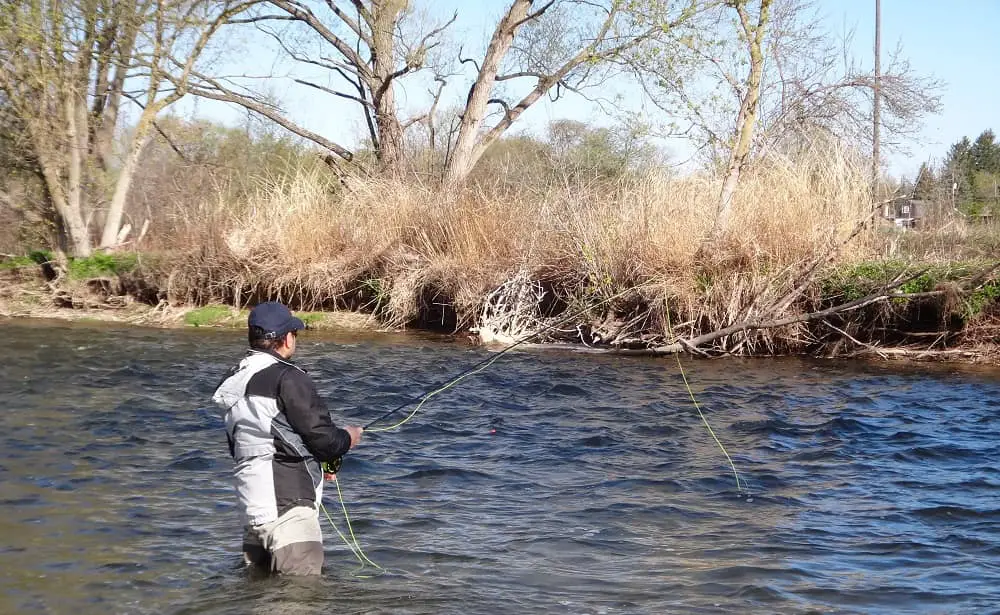
I use a two-fly nymph setup whenever possible because it increases my client’s chances of catching more trout, steelhead, or salmon in the rivers. If you are legally allowed to use two flies at a time, I would highly recommend it.
I will show you four of my most effective 2-fly setups for nymphs that I use when guiding and fishing.
The Three Main Advantages Of A 2-Fly Setup For Nymphing
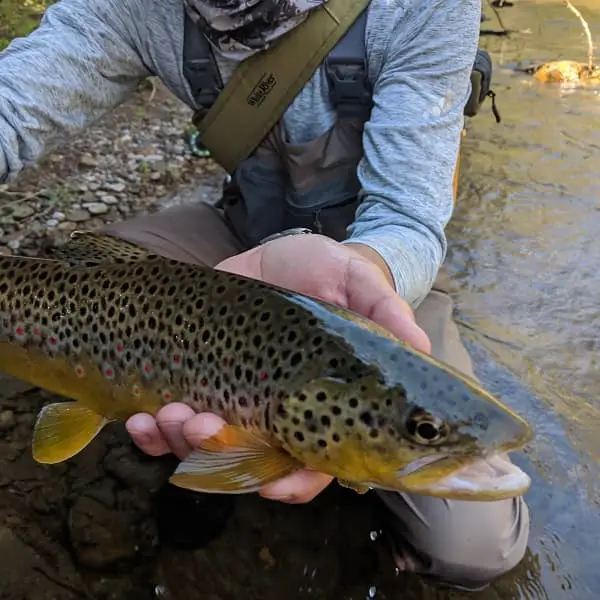
- A two-fly setup allows the angler to cover two parts of the water column simultaneously.
- It allows me to use two different flies to determine what the fish want.
- A two-fly rig also helps determine if the fish are feeding low or higher in the water column.
Things You Should Know About Using Two-Fly Setups.
- More Fish: Twice as many flies in the water at the same time means possibly twice the chance to catch fish.
- Catch Two At A Time: Although rare, I have had clients hook two trout at the same time, one on one fly and the other on the second fly.
- More Tangles: If you do not cast carefully or set the hook properly, more tangles and worse tangles are a problem with 2-fly rigs.
- Testing Flies: Two-fly rigs are great for testing out different flies, colors, and sizes. It’s rare that I run two of the same fly.
- Testing Depths: I will run my flies six inches apart in dirty water and 36 inches apart in clear water or when I think the fish might be feeding higher in the water column. A two-fly rig allows you to test feeding zones.
- Fly Position: I always tell my clients that they MUST keep their flies off the bottom. With the two-fly rig, if one fly is dragging the bottom, the other fly is probably in perfect position just over the bottom.
- Weights: Using two non-weighted flies means the bottom fly might be too far from the weights, which can affect the fly getting deep enough and the ability to detect a bite. I will sometimes add a weight 6 to 10 inches up from the bottom fly between the two flies to ensure depth and a tighter line for detecting bites.
- Which Fly Goes On The Bottom? I always put my confidence fly on the bottom and my “test fly,” or “secondary fly,” up the line. My confidence fly is the fly I believe is most likely to get eaten.
- Fly Sizes: I will often use two flies of the same size. However, there are times when one fly will be bigger because that’s what the situation calls for. An example would be a worm fly or Egg pattern or Woolly Bugger combined with a size 14 nymph. Size really does not matter, however, my bigger fly usually goes on the bottom.
- Using Weighted Flies: I use a lot of weighted flies so that I can avoid using split shots on the leader. I also Euro Nymph more than I use an indicator. When using two weighted flies, or one weight fly and one non-weighted fly, I almost always put the heavier fly on the bottom for a better presentation and better strike detection.
- Casting Two Flies: I have heard and seen anglers struggle with using two flies. When you add split shots and an indicator, it’s even worse. Use a lob cast and learn to keep the leader, weights, indicator, and flies all in a straight line when they leave the water, through the air, and especially when they land.
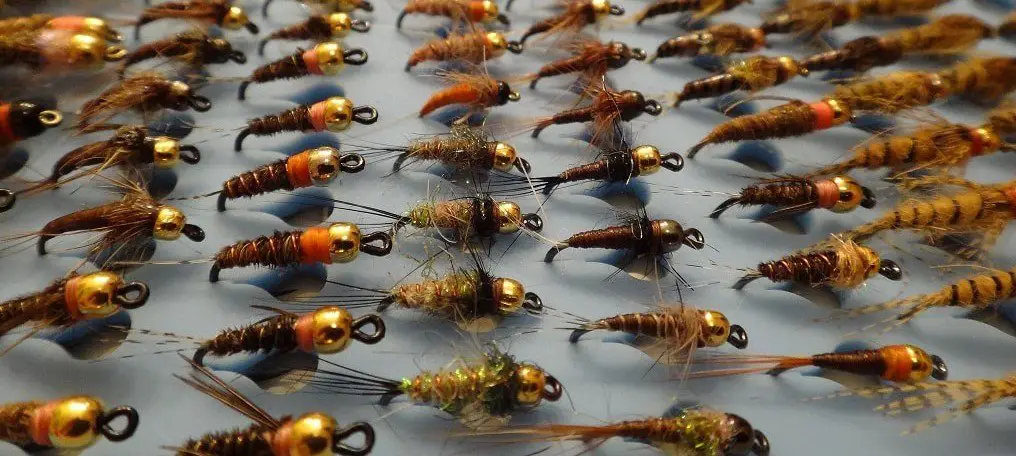
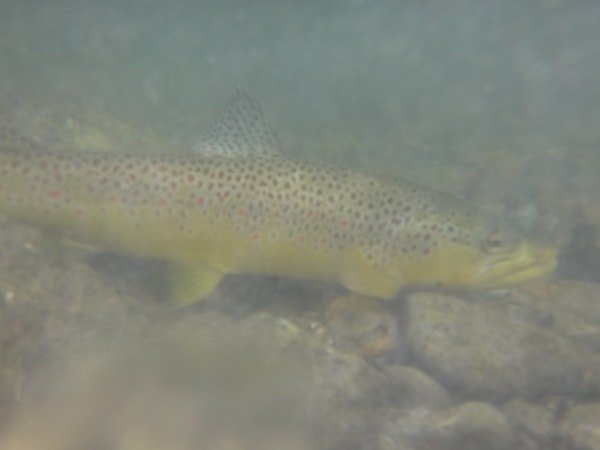
Pro Tip: Fish look up, not down, so stop dragging the bottom with either fly, and keep both flies at the fishes eye level or just above the trout and you WILL CATCH MORE FISH.
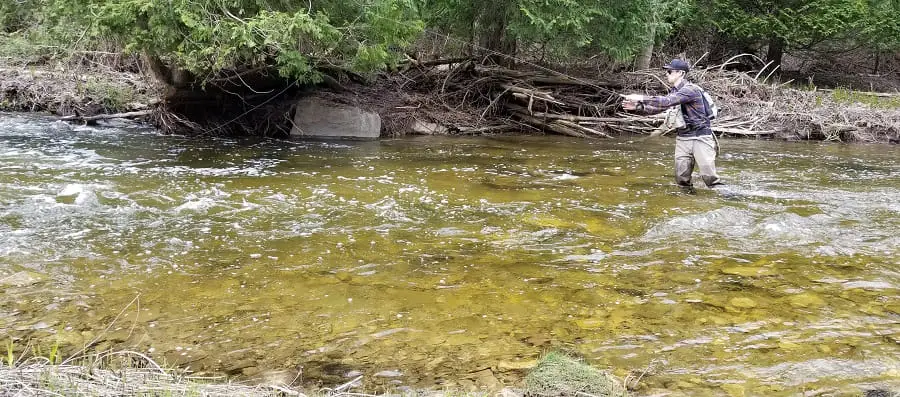
1. The 2-Fly Nymph Setup for Bottom Bouncing
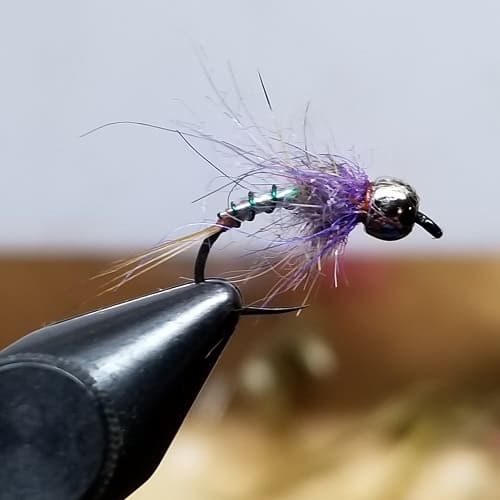
This is an advanced two-fly bottom bouncing setup that uses a tight line method with a sighter (no indicator) and the weights on the very bottom. I use it to help detect bites, gauge depth, and gauge and control the speed of my fly, which I believe is critical for catching the maximum amount of fish.
All the weights are on the leader at the bottom, so you can use non-weighted flies.
You can do this without the sighter and with an indicator, but the sighter really improves this method.
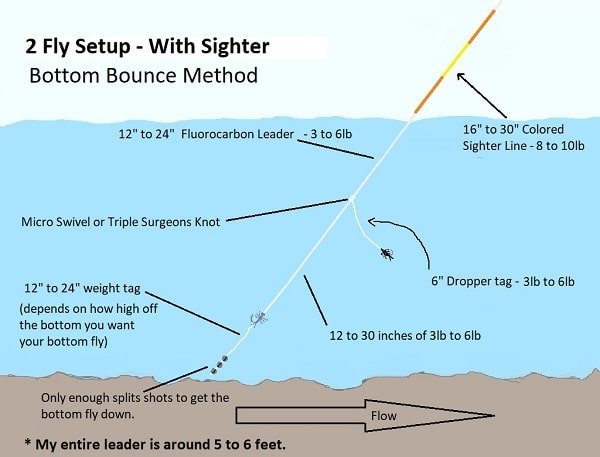
2. The Two-Fly Setup With Weighted Flies – The Euro Nymph Rig
This is my preferred method when running two weighted nymphs where I won’t need to cast more than 20 feet. It is almost identical to the above setup, but it doesn’t use any added weights on the line.
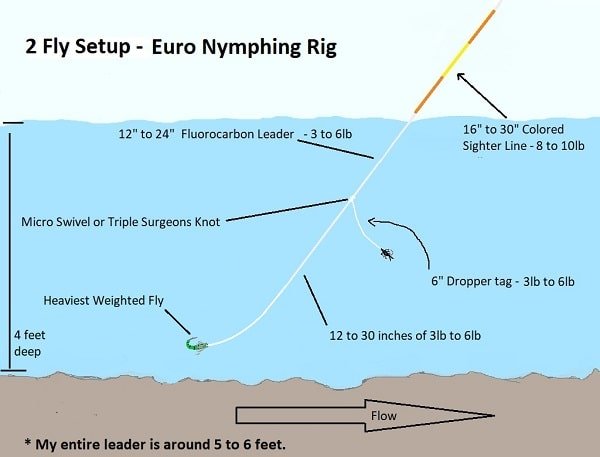
This is known as European Nymphing or tight line leader setup, and it’s excellent in most medium to fast rivers that are between one foot and seven feet deep.
3. The 2-Fly Indicator Setup
This is the most common method for anglers to use the two-fly nymph setup. I use this a lot for steelhead on bigger slower rivers or on big pools.
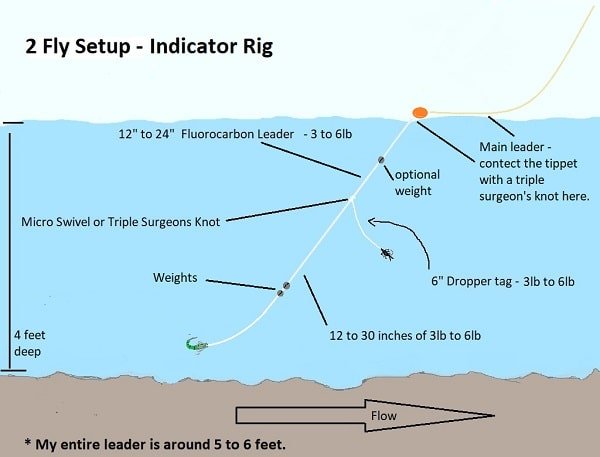
This 2-fly rig with the indicator is the best method to fish at long distances from you. It’s also good in deeper and slower pools, or under windy conditions.
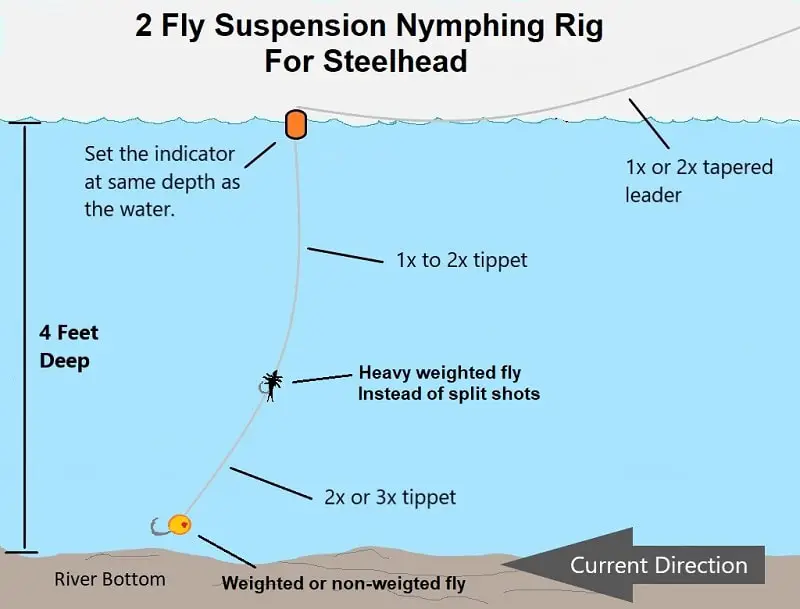
Fishing The 2 Fly Setup Like A Pro
I use two flies to test new patterns, to determine what levels the fish are feeding at, and what flies the fish want on any given day. In part two, Two Fly Nymphing: Testing Flies, Determining Depth and Casting, I discuss:
- My methods of testing out flies, how I determine which ones are best, are they better because of the position of the leader, or do the trout actually prefer one fly over another fly? What do I do next once I determine a good fly?
- How do I determine feeding zones with two nymphs?
- How to cast two nymphs with no tangles.
- How to present your nymphs better.
- Advanced nymphing with two flies.
Tight Lines,
Graham
